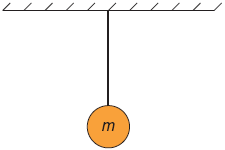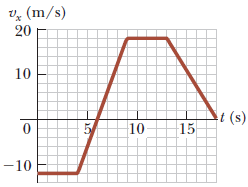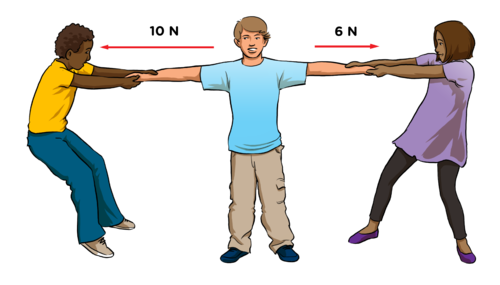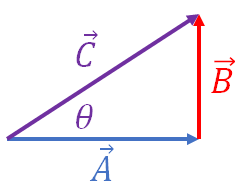How do you determine how fast an object is moving on a VT graph?
Look at the vertical (y) axis which is labeled velocity.
Draw a Free body diagram of this image.
Explain the forces.

The force of Weight is the force of the earth on the object (this is listed below as F earth)
The force of the Wire (will also accept string) is the force of the string on the object.
What is the equation for the force of friction?


What is the difference between orange 1 and orange 2?
Orange 1 is in free fall and has no horizontal velocity
Orange 2 is a projectile and have a horizontal velocity.
Newton's 2nd law....
Fnet=M*A
net forces equals mass times acceleration
 What is going on from Time 0-4 seconds?
What is going on from Time 0-4 seconds?
The cart is moving toward the detector at a constant speed of 12 m/s for 4 seconds

What is the net force and why (use a fact of physics)?
<-- 4 N
Forces acting in opposite directions subtract to determine the net force.
(<-----) - (--->) = (<--)
10N - 6N = 4 N
What are the units of force?
Newtons
Tell me about the horizontal and vertical forces of a projectile.
Tell me about the horizontal and vertical accelerations of a projectile.
Tell me about the horizontal and vertical velocities of a projectile.
Tell me about the horizontal and vertical distance equations for a projectile.
Horizontal forces do not exist for projectiles. The vertical force is gravity or the force of weight.
There is no horizontal acceleration. The vertical acceleration is 9.8 m/s/s or 10m/s/s because of gravity.
Since there is no horizontal acceleration, there is no change in the horizontal velocity, therefore the horizontal velocity is constant. The vertical velocity changes (increases or decrease depending) by 9.8 m/s/s or 10m/s/s
The distance equation for horizontal distance is d=vt because the velocity is constant. The distance equations used are either d=(1/2)at2 or d=v2/(2a)
Newton's third law...
the force of object A on object b is equal to the force of object b on object a.

How much distance has been covered in time 0-4 seconds?
How do you know?
48 meters
Count the squares between the VT graph and the x-axis.
The net force is always in the direction of ___________.
Therefore, if there is no net force, there is no _________.
The objects acceleration.
Acceleration.
any diagonal force can be written as the sum of which two force components?
Each component must be __________ than the diagonal force.
the x and y components
Smaller
Suppose that the cannonball is launched horizontally with no upward angle whatsoever and with an initial speed of 20 m/s from a cliff.
make a t-table of time and velocity in the vertical and horizontal directions.
Time Vel(H) Vel(V)
0s 20m/s 0m/s
1s 20m/s 10m/s
2s 20m/s 20m/s
3s 20m/s 30m/s
4s 20m/s 40m/s
5s 20m/s 50m/s
What is mass?
What is weight?
Which changes when you go to the moon?
Mass tells how much material is contained in an object.
Weight is the force of the planet acting on an object.
Weight changes when you travel to the moon
Approximately how fast is 1 m/s in miles per hour?
2 miles per hour

Above is a box on a ramp, draw the relevant forces.

What Direction does normal force always point?
What direction does gravity always point (on earth)?
Perpendicularly to a surface
Straight down
Suppose that the cannonball is launched horizontally with no upward angle whatsoever and with an initial speed of 20 m/s from a 125m cliff. How long would it take for the cannonball to reach the bottom?
How far would the cannonball travel in the x-direction?
Horisontal distance is equal to one half acceleration times time squared.
D=(1/2)*a*t2
125m=(1/2) *10m/s/s *t2
5 seconds = time
therefore the horizontal distance can be solved with d=vt
d=20m/s * 5 seconds
d=100 meters
How can you convert between mass and weight on earth?
On earth, the gravitational field is 10 N/kg. This means 1 kg of mass weighs 10 N.

Determine how far the object is from the detector at time 5 seconds.
It is NOT possible to determine how far an object is from the detector on a VT graph.
When two concurrent forces act perpendicularly to one another, the resultant force is....
-
-
-
Write out your facts and draw an example
- The resultant force is greater than if the two forces acted in opposite directions
- The resultant force is less than if the two forces acted in the same direction
- The resultant force is at an angle but closer to the larger force

Force A and Force B act perpendicularly. the resultant is force C.
A-B<C
A+B>C

Fnet = 10 N, right; Fgrav = 39.2 N; Fnorm = 39.2 N; Ffrict = 15 N; "mu"= 0.383
Fnet can be found using Fnet = m • a = (4 kg) • (2.5 m/s/s) =10 N, right.
Since the mass is known, Fgrav can be found: Fgrav = m • g = 4 kg • 9.8 m/s/s = 39.2 N.
Since there is no vertical acceleration, the normal force equals the gravity force.
Since the Fnet=10 N, right, the rightward force (Fapp) must be 10 N more than the leftward force (Ffrict); thus, Ffrict must be 15 N.
Finally, "mu"= Ffrict / Fnorm = (15 N) / (39.2 N) = 0.383.

the time and velocity table
What is acceleration?
What direction does the acceleration point when the object is speeding up?
What direction does the acceleration point when the object is slowing down?
Acceleration tells how much an object's speed changes in one second.
in the direction of motion
in the opposite direction of motion